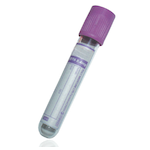Suitable Specimen Types
- Serum
- EDTA Plasma
- Li Hep Plasma
Specimen Transport
First class postSample Processing in Laboratory
Place sample in toxicology rack.Sample Preparation
None requiredTurnaround Time
3 days.Sample Stability
Keep refrigerated. 4 degrees.MDMA & MDA
General Information
3,4-Methylenedioxymethamphetamine (MDMA, Ectasy) is a ring substituted derivative of methamfetamine first synthesized in 1914. It is widely used as a recreational drug and taken in oral doses of 100 - 150 mg as the hydrochloride salt. MDMA is metabolised by N-demethylation to 3,4-methylenedioxyamphetamine (MDA) and by fission of the methylene bridge to form mono- and di-hydroxy derivatives, which are subsequently conjugated. MDA is a psychotropic compound in its own right, administered both orally and intravenously in doses of 50 - 250 mg as an illict drug.
Symptoms of MDMA toxicity include visual hallucinations, confusion, agitation, coma and hypotension. Seizures, hyperpyrexia, hypoglycaemia, rhabdomyolysis, hepatic and renal failure have also been reported after overdose. Several abusers of the drug have experienced long-lasting neurobehavioral disturbances following cessation of use.
Please note, this assay is for the quantitative determination of MDMA and MDA in blood. Stimulant use (including MDMA, MDA, MDEA, amfetamine, methamfetamine, 4MEC, MDPV, MMC & BZP) may also be detected via our urinary Drugs of Abuse Screen by LC-MS/MS.
Patient Preparation
No patient preperation required.
Notes
MDMA & MDA measured by LC-MS/MS
Reference Range
Toxicity associated with MDMA levels > 0.35 mg/L & MDA levels > 1.5 mg/L. (Schulz et al. Critical Care 2012, 16:R136).
Specifications
- EQA Scheme?: Yes
- EQA Status: LGC QUARTZ, LGC CLIN TOX
